MECS® Brink® mist eliminators have achieved an enviable reputation for being the world’s leader in aerosol sub-micron mist collection. To reach this level of expertise requires high quality products and outstanding before and after sale technical service. Our goal is to help our customers achieve outstanding and trouble-free performance from their Brink® products. Where a new or unique application is a challenge, a pilot plant is often the best proof of design concept. For those applications that were designed for severe service, corrosive environments or where start-up or operational difficulties occur, MECS® provides fiber analysis and troubleshooting to quickly diagnose and remedy problems to get your plant back on line. Whatever your issue, contact us and our expert team of technical support staff will be able to help you.
For some unusual applications, a field trial of the Brink® mist eliminators is helpful in testing its efficacy. In certain cases, the process description, conditions and requirements may lead to the conclusion that the application is unique with unknown fiber bed mist eliminator service life and maintenance needs. Elessent Clean technologies has metal and plastic pilot plants available to evaluate application feasibility to give customers a better insight into final performance. For details on the MECS® pilot plant service, rental and associated clean-up costs, which vary depending on the nature of the process being tested, please contact us.
The MECS® metal pilot plant is constructed of 316 stainless steel and consists of an inlet prefilter/cooling coil (may differ slightly depending upon application), a Brink® mist eliminator, and fan modules. The pilot plant is about 12 feet long, 4 feet wide, and 10 feet high, weighing 4,720 lbs. It is fully instrumented for controlling and monitoring gas flow rates. It handles up to 450 ACFM gas flow.
The MECS® plastic pilot plant consists of a Brink® mist eliminator module and a fan module. The unit is approximately 10 feet long, 4 feet wide, 10 feet high, and weighs 3,500 pounds. It is instrumented for controlling and monitoring gas flow and handles approximately 450 ACFM gas flow. The pilot plant is constructed of ATLAC 382 resin and should be operated below 165°F since the resin can deteriorate at any higher temperature.
If required, the Brink® mist eliminator element can be irrigated with water spray and the spray nozzle and all instrumentation and valving for such is included with the system. The nozzle is operated around 40 PSIG liquid pressure and 50 PSIG air pressure, and requires approximately 0.1 GPM liquid and six SCFM air.
Recommendation for sample stream nozzle sizing and location will be provided for the best performance, and the reliable data for full scale design. The pilot plant is supplied to customers where an assigned person will need to install, operate it, and collect the operating data as described in the instructions provided with the pilot plant.

If internal plugging is suspected, a fiber core sample can be taken which is a small round section of packing removed from the fiber bed. The entire depth of the bed is removed. Core samples are very useful in detecting the presence of plugging materials and the extent to which plugging materials have penetrated the fiber bed. A rubber cork borer ranging in size from about 3/8 to 1/2 inch in diameter (9 to 12 mm) is used to take core samples. A rubber cork borer can be obtained from a laboratory supply store. It is helpful to use a plunger to push the core sample into a test tube for safe keeping. After samples are taken, the resulting hole in the element should be carefully plugged using laboratory glass wool sometimes referred to as “angel hair”.
NOTE: Before sending fiber samples, a safety sample data sheet should be completed and sent to Elessent Clean Technologies for approval.
The heart of MECS® Brink® mist eliminators is the collecting fiber. Fiber bed mist eliminator performance can be affected over time by fiber corrosion or by accumulation of plugging agents. Elessent Clean Technologies provides free fiber sample analyses for Brink® mist eliminator users to evaluate the condition of their fiber beds and to help predict remaining service life.
There are a number of ways to collect fiber samples. One way is to take a few “pinches” off the upstream surface of the bed. Another option is to take a core sample if there is a need for a more in-depth evaluation.
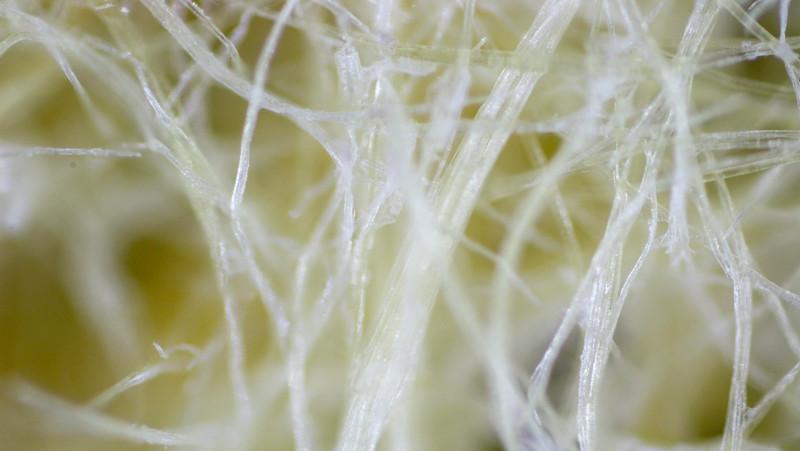
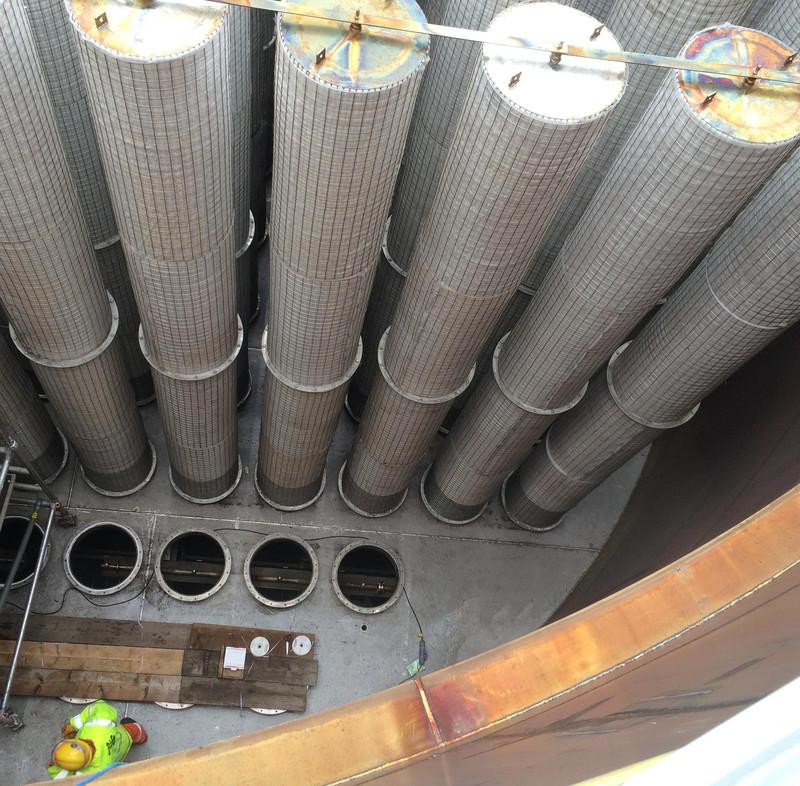
Our goal is to help our customers achieve outstanding and trouble-free installation and operation with their Brink® mist eliminator products.
Elessent Clean Technologies is the expert on all types of mists, be they in process gases, indoor air quality (metalworking systems) or air pollution. Effective troubleshooting begins when Brink® fiber bed elements are installed and operated by ensuring proper installation and operation at design process conditions.
Installation/Maintenance: Proper mist eliminator installation and maintenance is as important as designing the right mist eliminators for the job. An effective installation requires proper gasket selection, flat mounting surfaces, correct bolt tightening procedures, and proper liquid seals.
Issues to be aware of during mist eliminator installations include:
A number of testing or troubleshooting methods can be used to evaluate the installation. They include:
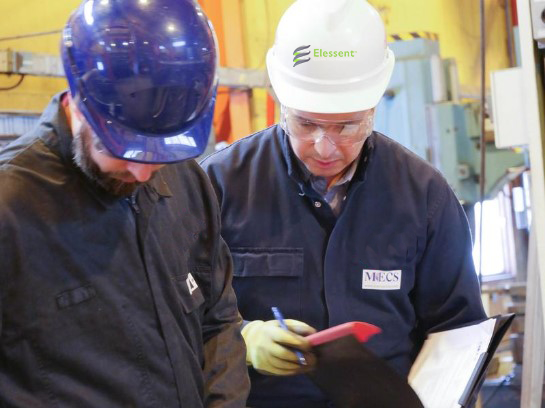
By far the most important “trouble-shooting” or “trouble-prevention” method involves monitoring of mist eliminator performance on a regular basis and, if undesirable symptoms occur, conducting an evaluation to correct problems before they become severe. Monitoring mist eliminator performance involves maintaining accurate and complete operating records. Records should include inlet process conditions: gas flow rate, temperature, and pressure along with element pressure drop and liquid drain rate from the mist eliminator vessel.
Monitoring element pressure drop and gas flow rate over time verifies operation is in the correct range. Any significant deviation in pressure drop is likely to be accompanied by a deviation in collection performance. We recommend keeping a plot of normalized pressure drop (pressure drop corrected to design gas flow rate) versus time.
The pressure drop is measured between a pressure tap on the inlet (upstream) side of the mist eliminator and a pressure tap on the outlet (downstream) side of the mist eliminator using calibrated equipment. Typical element pressure drops will range from four to 20 inches water column gauge (100 to 500 mm water column). Make sure pressure taps are open.
Avoid measuring pressure drop by comparing the static pressures on both sides of the mist eliminators since small inaccuracies in readings are magnified when calculating the difference (e.g., a 10% error in reading static pressure of -80 inches water column gauge (-2000 mm wc) translates into a 60% error in calculating a 12 wcg (~300 mm wc) mist eliminator pressure drop).
Pitot tube stack readings using EPA test methods one and two can provide an acceptable measure of gas flow if a suitable location can be found in the ductwork.
Information on using other troubleshooting methods is available on request.
If simple tests and/or an inspection do not identify the problem, a mist sampling program may be necessary. The sampling method must include the separation of mist from any vapors in the process. This needs to be reviewed with the sampling company.
Other test equipment that can be used includes optical aerosol monitors and Dwyer flowmeters. Test laboratories are often used to evaluate condition of the fiber packing (see fiber analyses).
For Better Efficiency, Longer Service Life and Optimized Pressure Drop
Elessent Clean technologies can repair, upgrade and repack any brand fiber bed to meet or improve on original equipment specifications.
Fast Turn Around and Expedited Delivery
We have flanges, screens, end plates, gaskets, fasteners, roving and mat – all in stock.
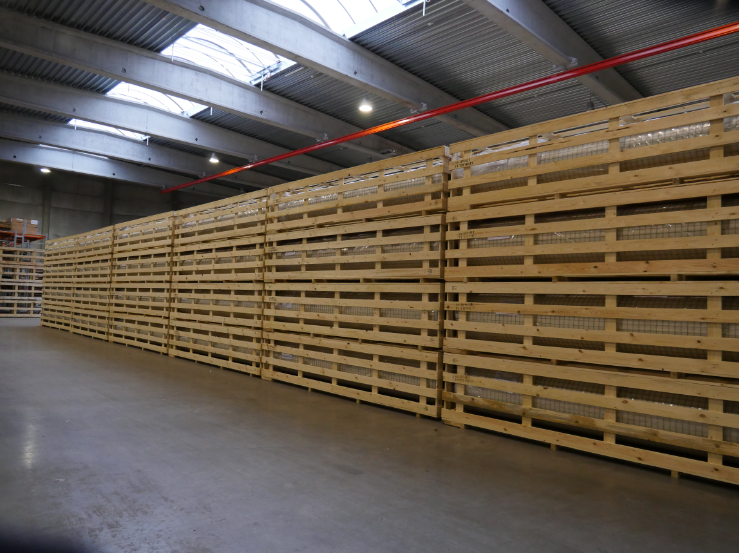
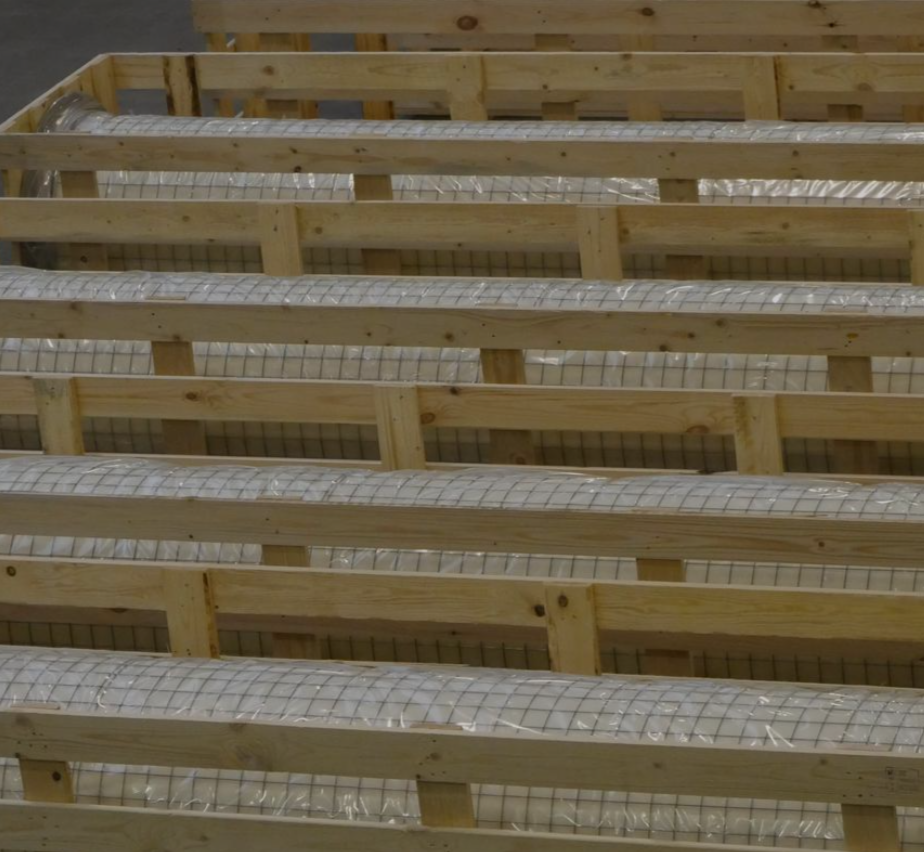
Repack turnaround times quoted are typical times. If faster turnaround is required, please notify us to arrange shop time. Overtime charges may be levied depending on availability of shop time.
The price quoted does not include any repairs to elements or shipping crates. MECS will advise you of the price before commencing work. The price is based on receiving elements unpacked (fiber removed) and cleaned. Contaminated elements cannot be received at our facility and will be refused at the dock. If you want to send your elements packed, we have made arrangements with a St. Louis based disposal firm to provide unpacking and disposal of contaminated fiber from your elements. This firm is:
TRI-Rinse
1402 2nd Street
St. Louis, MO 63104
Telephone: 314.647.8338
TRI-Rinse is located a few miles from Corrpak, our manufacturing and North American repacking plant. After TRI-Rinse unpacks your elements, they will truck them over to Corrpak so that we can then provide our repack services. NOTE: you will need to issue separate purchase orders to TRI-Rinse for the unpacking and disposal service and to MECS for repair and repacking.
Elements for repack and purchase orders are sent to different locations. Return elements to the facility in the left-hand column and send correspondence and purchase orders to the address on the right. To facilitate handling your order, please include our reference number which is either a “PN” number which has the following format on the paperwork “ XXXXX.XXX-XXX” or a reference number which is normally shown on the original order documentation.
For customers in USA, Canada, Mexico, Latin America and Asia Pacific countries:
Send empty cages to packing facility:
MECS, Inc.
c/o Corrpak, Inc.
719 Spirit 40 Park Road
Chesterfield, MO 63005
Send correspondence & purchase orders:
MECS, Inc.
Mist Eliminators
PO Box 14547
St. Louis, MO 63178
Tel: +1.314.275.5700
Fax: +1.314.469.8805
Customs clearance by C.H. Powell
Notify party & customs documents to:
C.H. Powell
4477 Woodson Road, Suite 123
St. Louis, MO 63134
Contact: Kari Gahn
Telephone: +1.314.373.1064
Fax: +1.314.427.4741
MECS, Inc.
Mist Eliminators
P.O. Box 14547
St. Louis, MO 63178 USA
Telephone: +1.314.275.5700
Fax: +1.314.469.8805
For Customers in Europe and Africa:
Please address your order to us via post of fax at our below address:
Elessent Clean Technologies
MECS Europe/Africa BV
Hoeilaart Office Park, Building B
I.Vandammestraat 7
1560 Hoeilaart
Belgium
Tel: +32.02.658.26.20
Then you may start organizing the shipment of the repack elements to the below address in Belgium:
BME & Services
Attn: Mr. Jonathan Schrauwen
Eddastraat, 40
9042 Gent
Belgium
Tel: +32.09.228.92.55
Fax: +32.09.229.25.99
Opening hours: Monday – Thursday, 8:30 am–12:00 pm and 1:00 pm-4:00pm (except public holidays), Friday only until 3:00 pm
Please also notify us of your shipment details, and send us a copy of your shipping documents, as well as your proforma invoice by email (mecslogisticseurope@elessentct.com).
The goods should be accompanied by a proforma invoice indicating:
In case the repack elements are sent from EFTA countries and non-EU countries, then all the proper documentation must be issued (EUR1, ATR, etc.). If repack is sent from a non-EFTA country, regular import procedure of the goods into the European Union will follow. If necessary, the inward processing procedure may also apply. Please provide MECS with supporting transport and customs documentation containing order references and details.
If the repack elements arrive at the port of Antwerp, your forwarder’s agent will clear the material at the quay. You may simply make sure that you inform us of the arrival of the repack in Antwerp. Your transporter may then directly transport the goods to BME & Services from the seaport.
If the repack elements arrive at the Brussels airport or by truck, your transporter will clear the goods via their agent and proceed to ship to BME & Services in Gent.
In both cases, it is advisable to contact MECS Europe/Africa BVBA, and let us know when the goods can be expected at BME & Services in Gent to anticipate delivery.
Should you have further questions regarding this repack procedure, please feel welcome to contact us.
